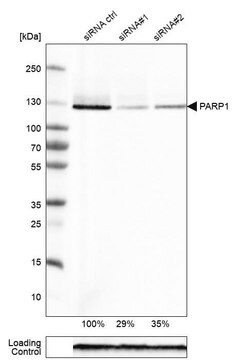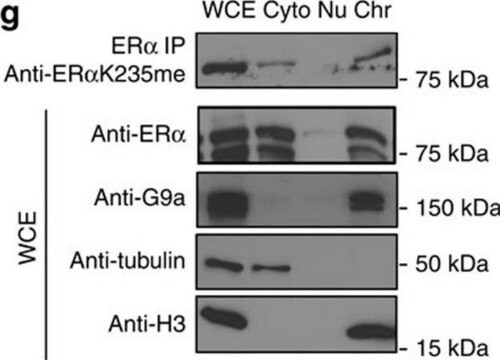CWA-1104
Anti-Human β-Tubulin III (TU-20) ColorWheel® Dye-Ready mAb
for use with ColorWheel® Dyes (Required, (Sold Separately))
Synonyme(s) :
Tubulin beta-3 chain;Tubulin beta-4 chain;Tubulin beta-III;beta-Tubulin 3
About This Item
Produits recommandés
Source biologique
mouse
Niveau de qualité
Forme d'anticorps
purified antibody
Type de produit anticorps
primary antibodies
Clone
TU-20, monoclonal
Gamme de produits
ColorWheel®
Forme
lyophilized
Poids mol.
calculated mol wt 50.43 kDa
Produit purifié par
using Protein A
Espèces réactives
human
Conditionnement
antibody small pack of 25 μL
Caractéristiques du produit alternatif plus écologique
Waste Prevention
Designing Safer Chemicals
Design for Energy Efficiency
Learn more about the Principles of Green Chemistry.
sustainability
Greener Alternative Product
Technique(s)
flow cytometry: suitable
Isotype
IgG1
Séquence de l'épitope
C-terminal
Numéro d'accès Protein ID
Numéro d'accès UniProt
Compatibilité
for use with ColorWheel® Dyes (Required, (Sold Separately))
Autre catégorie plus écologique
Conditions d'expédition
ambient
Température de stockage
2-8°C
Modification post-traductionnelle de la cible
unmodified
Informations sur le gène
human ... TUBB3(10381)
Description générale
Spécificité
Immunogène
Application
Evaluated by Flow Cytometry in Fixed and permeabilized SH-SY5Y cells.
Flow Cytometry Analysis: Intracellular staining of one million fixed and permeabilized SH-SY5Y cells was performed using 5 μL of a 1:1 mixture of Cat. No. CWA-1104, Anti-Human ?-Tubulin III (TU-20) ColorWheelColorWheel® Dye-Ready mAb and Cat. No. CWDS-PE ColorWheelColorWheel® Antibody-Ready Phycoerythrin (PE) Dye or an equivalent amount of Cat. No. CWA-1013 Mouse IgG1 isotype control and Cat. No. CWD-PE ColorWheelColorWheel® Antibody-Ready Phycoerythrin (PE) Dye.
Tested Applications
Flow Cytometry Analysis: Intracellular staining of one million fixed and permeabilized SH-SY5Y cells was performed using 5 μL of a 1:1 mixture of Cat. No. CWA-1104, Anti-Human ?-Tubulin III (TU-20) ColorWheelColorWheel® Dye-Ready mAb and Cat. No. CWDS-APC ColorWheelColorWheel® Antibody-Ready Allophycocyanin (APC) Dye or an equivalent amount of Cat. No. CWA-1013 Mouse IgG1 isotype control and Cat. No. CWDS-APC ColorWheelColorWheel® Antibody-Ready Allophycocyanin (APC) Dye.
Note: Actual optimal working dilutions must be determined by end user as specimens, and experimental conditions may vary with the end user
Compatibilité
Description de la cible
Forme physique
Reconstitution
Stockage et stabilité
Informations légales
Clause de non-responsabilité
Not finding the right product?
Try our Outil de sélection de produits.
Nécessaire, mais non fourni
Code de la classe de stockage
11 - Combustible Solids
Classe de danger pour l'eau (WGK)
WGK 2
Point d'éclair (°F)
Not applicable
Point d'éclair (°C)
Not applicable
Certificats d'analyse (COA)
Recherchez un Certificats d'analyse (COA) en saisissant le numéro de lot du produit. Les numéros de lot figurent sur l'étiquette du produit après les mots "Lot" ou "Batch".
Déjà en possession de ce produit ?
Retrouvez la documentation relative aux produits que vous avez récemment achetés dans la Bibliothèque de documents.
Notre équipe de scientifiques dispose d'une expérience dans tous les secteurs de la recherche, notamment en sciences de la vie, science des matériaux, synthèse chimique, chromatographie, analyse et dans de nombreux autres domaines..
Contacter notre Service technique








